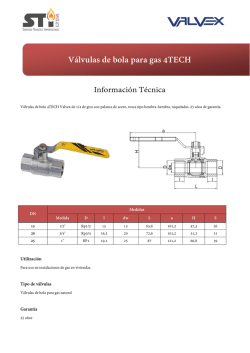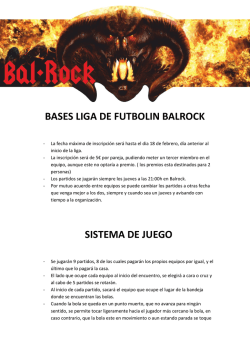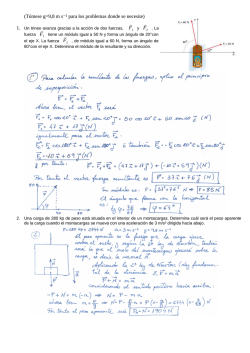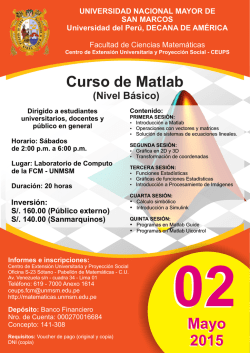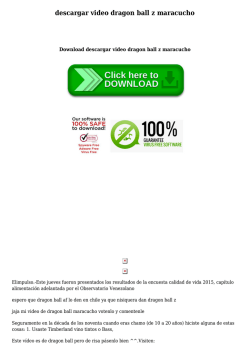
Implementación y control del sistema bola en placa
Revista Electrónica sobre Tecnología, Educación y Sociedad ISSN 2448 - 6493 Implementación y control del sistema bola en placa Implementation and control of the ball on plate system Jesús Medina Cervantes Universidad Veracruzana [email protected] Rubén Villafuerte Díaz Universidad Veracruzana [email protected] Victorino Juárez Rivera Universidad Veracruzana [email protected] Número 07. Enero – Junio 2017 Resumen En este artículo se presenta la implementación y el control del sistema mecatrónico llamado “bola en placa”. Este sistema tiene como finalidad apoyar el aprendizaje de estudiantes de Ingeniería Mecatrónica e Ingeniería Mecánica, en temas relacionados con los sistemas control. El sistema de bola en placa tiene dos grados de libertad que son controlados mediante servomotores, lo cual permite controlar el movimiento de una bola sobre una placa plana y colocarla en una coordenada (𝑥, 𝑦) definida por el usuario, dentro de un área cuadrangular de 240𝑚𝑚 × 240𝑚𝑚. Si la bola es movida de su posición por algún agente externo, el sistema de control actúa inmediatamente para llevar la bola a la posición definida por el usuario. El algoritmo de control empleado fue PID, sin embargo al tratarse una plataforma destinada al aprendizaje, queda abierta para experimentar con otros algoritmos de control. Como sensor se emplea una cámara web, cuyas imágenes son procesadas en una computadora mediante MATLAB para obtener las coordenadas (𝑥, 𝑦) Vol. 4, Núm. 7 Enero – Junio 2017 CTES Revista Electrónica sobre Tecnología, Educación y Sociedad ISSN 2448 - 6493 del centroide de la bola. El algoritmo de control está programado en MATLAB, el cual determina los ángulos que deben tomar los servomotores para controlar la bola. Estos ángulos son enviados mediante el protocolo RS-232 hacia una placa de control gestionada por el PIC18F2550, quien es el encargado de controlar el movimiento angular de los servomotores. Este sistema permite a los estudiantes visualizar de manera real los efectos de los ajustes realizados en los parámetros del algoritmo de control PID, lo cual sin duda hará que su aprendizaje sea significativo y les permita adquirir competencias en el control de sistemas mecatrónicos. Palabras clave: PID, MATLAB, cámara web, PIC18F2550, servomotores. Abstract This paper presents the implementation and control of a mechatronic system called “ball on plate”. The goal of the system is to aid Mechatronic and Mechanical students in learning topics related to control systems. The ball on plate system has two degree of freedom that are controlled by two servomotors, which let to control the movement of a ball over a plane plate and locate it in (𝑥, 𝑦) coordinates defined by the user, within an area of 240𝑚𝑚 × 240𝑚𝑚. If the ball is taken out of its set point position by an external agent, the control system immediately acts to take the ball back to the position defined by the user. The control algorithm implemented was PID, but it is possible to experiment with another algorithm because it is a platform designed for learning. A webcam was used as the sensor, which image frames are processed in a computer using MATLAB to get the (𝑥, 𝑦) centroid coordinates of the ball. The algorithm was programmed in MATLAB, which find the angles that servomotors have to rotate for controlling the ball. These angles are sent, through the RS-232 protocol, to an electronic device managed by the PIC18F2550, which control the angular rotation of the servomotors. This system lets students to visualize the effects of changing any of the gain parameters in the PID control algorithm, which will help students to better understanding and learning how to control mechatronic systems. Key words: PID, MATLAB, Webcam, PIC18F2550, Servomotors. Vol. 4, Núm. 7 Enero – Junio 2017 CTES
© Copyright 2025

